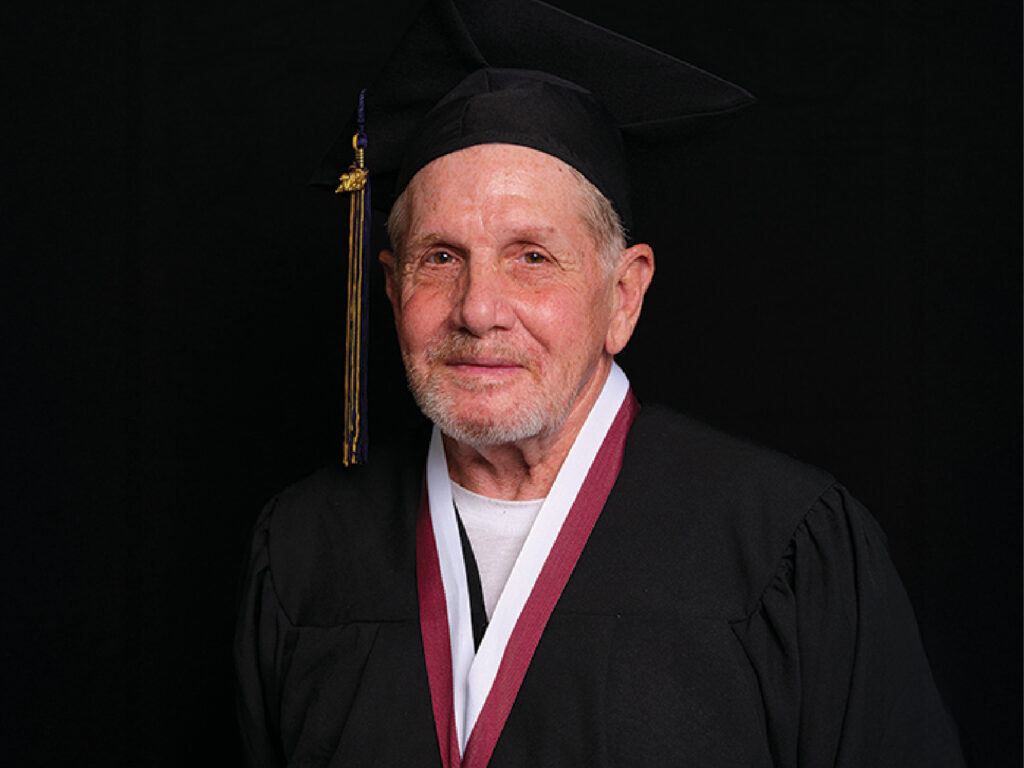The students are focused, animated and engaged. The teachers are thoughtful and responsive. Class discussion is probing and heartfelt. And there are no discipline problems.
It’s the spring semester of English 101 at San Quentin State Prison.
On a recent Thursday evening, the 18 students in the class were discussing three George Orwell essays.
“What was Orwell trying to say in ‘A Hanging’ when he mentioned a condemned man took the time to step aside to avoid a puddle on his path?” 35- year-old Abdul Waahid asked teaching assistant Bryan Ritter and the three other inmates in his discussion group.
“He’s about to be put to death,” concluded Waahid, of Greensboro, N.C. “And he still has enough dignity to avoid a puddle.”
There were countless other points to debate, often passionately, and everyone had something to say.
“Teaching at San Quentin has revitalized my teaching at S.F. State,” said Professor Judy Breen, 68, who has taught at State since 1969 and at the prison for two years. “I’m doing things freshly and differently.”
Breen is also doing something unprecedented at San Quentin — enlisting nine teaching assistants to work with the inmates in small groups, to create a symbiotic collision of worlds.
“I wanted to bring together students from very different university communities,” Breen said. “I thought they both had a lot of misconceptions about each other, and a great deal to learn from each other.”
The prisoners all wore blue, a color that Breen and her teaching assistants were told to avoid — just so the guards would know whom to shoot, someone said, only half-jokingly, if things got out of hand.
Breen’s presence dominated the room. Dressed in a salmon-colored shirt, white pants, scarf and beige sweater, she would have fit right in at a garden party. Brisk and breezy at the same time — and thoroughly in charge — she resembled a cross between Maggie Smith and Katharine Hepburn.
“Teaching at San Quentin is a little bit like having a late-life love affair,” Breen said later during a phone interview. “It’s recharged my life.”
Her class, which meets for 2 1/4 hours two nights a week, includes sex offenders, thieves, killers and kidnappers.
Dream students
“They’re kind of dream students,” said 39-year-old Jody Lewen, who runs the prison’s college program. “They’re the opposite of the way people imagine. They’re incredibly attentive and respectful, appreciative and hardworking.”
About 1,500 of the prison’s 6,000 inmates are eligible to take English 101 and the other college-level classes that can lead to an associate of arts degree through Patten University, a small nondenominational Christian college in Oakland that has been running the program since 1996.
They need a high school diploma or its equivalent and can’t be on Death Row, Lewen said. About 150 inmates are enrolled in the classes, which are run by volunteers since federal funds for prison education ended nationwide in 1994. San Quentin is the only on-site program in California that grants degrees to inmates.
Inmates can study everything from Indonesian colonial literature to the philosophy of Wittgenstein, said Lewen, and ethics is a requirement. Volunteers come from Bay Area colleges and universities, especially UC Berkeley, and usually have no idea what crimes their students committed.
“We have a policy that we don’t ask,” Lewen said. “It’s none of our business. But we tell everyone that if they’re not comfortable teaching people who killed people, they shouldn’t volunteer.”
Ritter, one of Breen’s teaching assistants, said he wouldn’t ask in any case.
“The answer will only bias you,” said Ritter, 29. “If your purpose is to educate, you educate. This sort of knowledge will get in the way.”
Students are medium-security prisoners; some of them are lifers.
“People still say to me, ‘Why are you teaching these guys? They’re never going to get out,’ ” Lewen said. “Well, my mother’s never going to get out of New York City. What difference does it make? … Everybody has the need to be intellectually stimulated.”
Breen’s English class began in late January and will end April 27. It was supposed to wrap up a week earlier, but a partial lockdown in the prison one night and an erroneous cell count another evening cut down on attendance.
9 teaching assistants
Although it’s the fifth class Breen has taught at San Quentin, bringing in the nine teaching assistants for eight sessions was something new. She figured she’d have trouble recruiting them, but she quickly got more than she needed — mostly from her courses on Shakespeare and on 17th century British metaphysical poets.
“I wanted the prisoners and S.F. State students to meet on a level playing field,” Breen said. “They sat in small groups together and read the same essays together.”
Everyone is learning
Both inmates and TAs are earning three credits. Breen said the inmates often show extraordinary oral skills, while the S.F. State students are more grounded in writing and composition.
“I’m not really a great English student, but Judy is breaking it down for me,” said inmate Henry Frank, 29, of Eureka. “Now I’m enjoying writing. In high school I’d skip out a lot. This class — I actually look forward to coming to it.”
College classes take place in the Education Center, where two prison guards are stationed at the entrance. The classrooms have linoleum floors, green blackboards and old-fashioned wooden desks, as well as large windows that open onto the hallways.
“One of the first things I thought, walking into the Education Center, was, ‘This looks a lot like S.F. State,’ ” said Breen, who admitted to being nervous initially. “The same institutional architecture. When I saw those heavy desks, I was so envious. Then I realized they were made like that so inmates couldn’t pick them up and throw them at me.”
For the teaching assistants’ four-week visit, she chose Orwell’s “Marrakech,” “A Hanging” and “Shooting an Elephant,” partly because they were rich enough to stand up to a month of scrutiny and partly because Orwell dealt with crime, violence, remorse and terrible choices.
Ritter said he came away impressed by the “level of proper intellectual debate” in the class.
“They easily separate themselves from their analysis or argument — a rather complex and unattainable concept for most adults ‘on the outside,’ ” he said. “They are terribly eager to learn.”
It’s an eagerness reflected in their faces, in rushing down the stairs to get to class.
‘They want to be here’
“You see their expressions,” said guard J. Beebe, who works at the Education Center’s entry checkpoint. “They want to be here.”
Inmate Abraham Glasper, 35, said San Quentin’s college students realize there’s more to life than being in prison.
“This puts you in a better position to not come back,” said Glasper, who’s from Baton Rouge, La.
Glasper, Frank and Waahid were in teaching assistant Ritter’s discussion group, along with inmate Chuck Hopple, of Santa Clara, the oldest of the five.
New pleasure discovered
At age 51, he’d discovered something new: “There’s some pleasure in learning,” he said. “It’s enjoyable and it’s fun.”
It’s also very time-consuming, Waahid said. And that is a good thing, as far as he’s concerned.
“It helps you stay away from the problems in the yard,” he said.
As for Breen, she said the classes always keep her off balance, with questions and assumptions she would never have expected. She likes it that way.
“San Quentin students have had life experiences that sometimes have made them deeply reflective, with time on their hands to think,” she said. “They often have lived hard lives and made bad choices and suffered heavy consequences — which gives classroom discussions an edge you rarely have at State.”
Attribution: This originally appeared on SFGate on March 29, 2004. Read Story
Please note that the Prison University Project became Mount Tamalpais College in September 2020.











